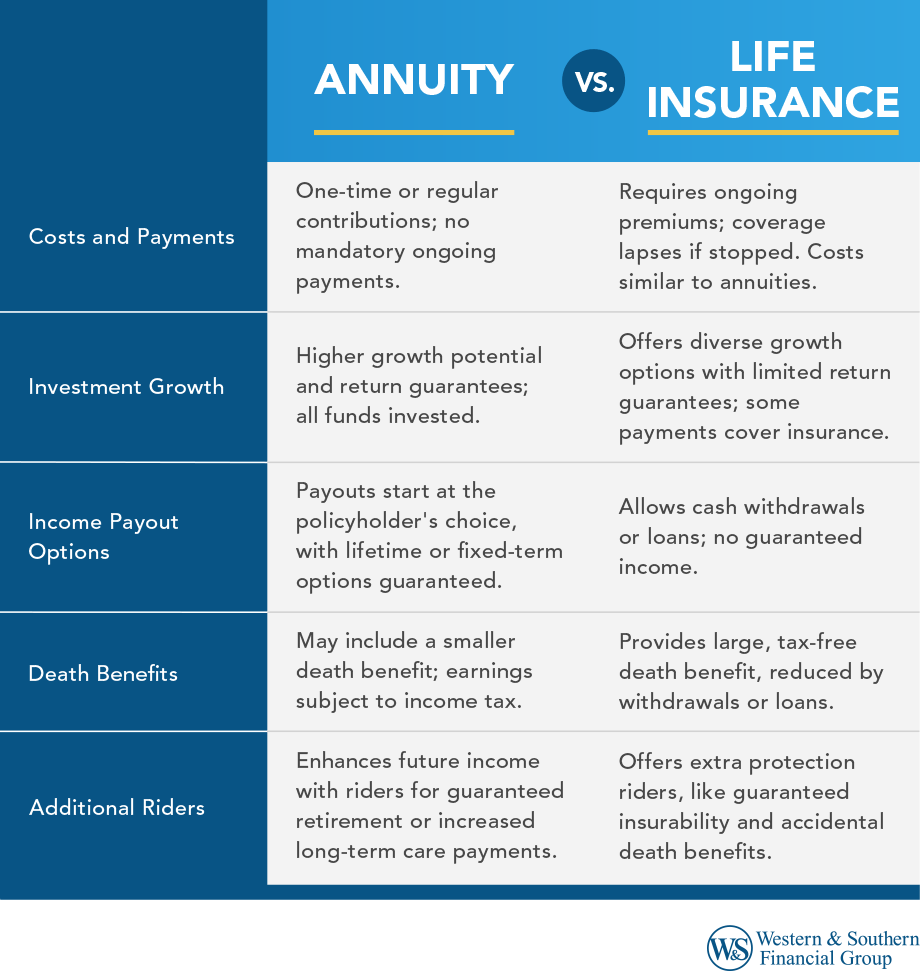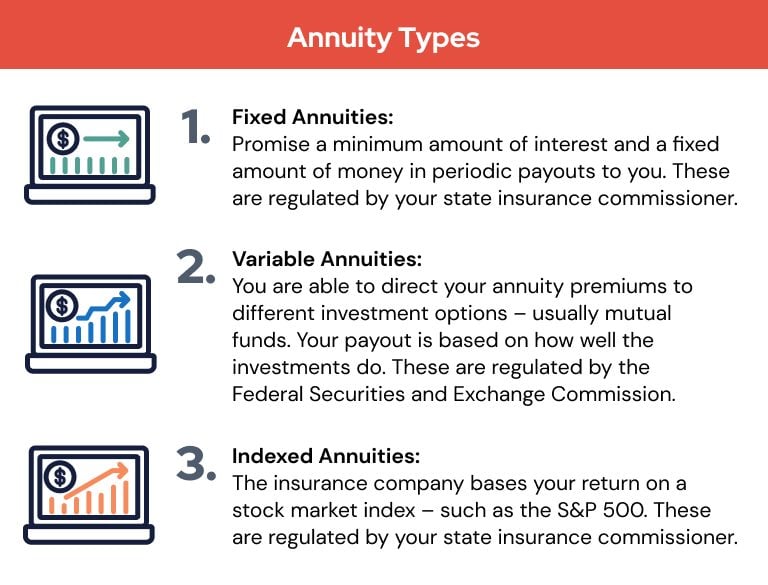All Categories
Featured
Table of Contents
The payment could be invested for growth for an extended period of timea single premium postponed annuityor spent momentarily, after which payout beginsa solitary costs immediate annuity. Single costs annuities are usually funded by rollovers or from the sale of an appreciated possession. A flexible costs annuity is an annuity that is planned to be funded by a collection of payments.
Owners of dealt with annuities recognize at the time of their acquisition what the worth of the future cash flows will be that are produced by the annuity. Clearly, the variety of capital can not be known in advance (as this depends upon the agreement owner's lifespan), yet the guaranteed, taken care of rate of interest price at least offers the proprietor some degree of assurance of future earnings from the annuity.
While this distinction appears easy and simple, it can dramatically affect the value that an agreement owner eventually obtains from his/her annuity, and it creates significant uncertainty for the contract proprietor - Understanding variable annuities. It also normally has a material impact on the level of charges that a contract proprietor pays to the issuing insurance policy company
Fixed annuities are often used by older capitalists that have actually limited possessions but who wish to offset the danger of outliving their assets. Fixed annuities can work as an effective device for this purpose, though not without particular drawbacks. In the case of instant annuities, when an agreement has been acquired, the agreement proprietor gives up any type of and all control over the annuity assets.
Understanding What Is A Variable Annuity Vs A Fixed Annuity Key Insights on Immediate Fixed Annuity Vs Variable Annuity What Is the Best Retirement Option? Pros and Cons of Various Financial Options Why Choosing the Right Financial Strategy Can Impact Your Future How to Compare Different Investment Plans: How It Works Key Differences Between Fixed Index Annuity Vs Variable Annuities Understanding the Rewards of Fixed Vs Variable Annuity Pros And Cons Who Should Consider Fixed Vs Variable Annuity? Tips for Choosing Fixed Vs Variable Annuities FAQs About Planning Your Financial Future Common Mistakes to Avoid When Choosing a Financial Strategy Financial Planning Simplified: Understanding Your Options A Beginner’s Guide to Smart Investment Decisions A Closer Look at How to Build a Retirement Plan
An agreement with a common 10-year abandonment period would charge a 10% abandonment fee if the contract was given up in the initial year, a 9% abandonment charge in the 2nd year, and so on till the surrender fee gets to 0% in the agreement's 11th year. Some deferred annuity contracts contain language that permits tiny withdrawals to be made at numerous intervals throughout the surrender period without penalty, though these allowances typically come with a cost in the kind of lower surefire rate of interest.
Equally as with a fixed annuity, the owner of a variable annuity pays an insurance provider a round figure or collection of payments in exchange for the promise of a series of future settlements in return. But as pointed out above, while a taken care of annuity expands at an ensured, continuous price, a variable annuity expands at a variable rate that relies on the performance of the underlying investments, called sub-accounts.
During the accumulation stage, possessions spent in variable annuity sub-accounts expand on a tax-deferred basis and are taxed only when the contract proprietor withdraws those revenues from the account. After the build-up phase comes the earnings phase. Gradually, variable annuity properties ought to theoretically enhance in value till the contract owner decides he or she would certainly such as to start withdrawing money from the account.
The most considerable concern that variable annuities usually present is high price. Variable annuities have numerous layers of costs and expenditures that can, in accumulation, produce a drag of up to 3-4% of the contract's value each year.
M&E expenditure costs are computed as a percent of the agreement worth Annuity companies hand down recordkeeping and various other administrative expenses to the agreement proprietor. This can be in the form of a flat annual fee or a portion of the agreement worth. Administrative charges may be consisted of as component of the M&E threat charge or might be assessed individually.
These charges can range from 0.1% for easy funds to 1.5% or even more for proactively handled funds. Annuity contracts can be tailored in a variety of methods to offer the particular demands of the contract proprietor. Some usual variable annuity cyclists consist of guaranteed minimum build-up benefit (GMAB), assured minimum withdrawal advantage (GMWB), and guaranteed minimum income advantage (GMIB).
Understanding Variable Annuities Vs Fixed Annuities Key Insights on Annuity Fixed Vs Variable Defining Tax Benefits Of Fixed Vs Variable Annuities Pros and Cons of Various Financial Options Why Choosing the Right Financial Strategy Is a Smart Choice How to Compare Different Investment Plans: A Complete Overview Key Differences Between Annuities Variable Vs Fixed Understanding the Risks of Long-Term Investments Who Should Consider Strategic Financial Planning? Tips for Choosing What Is A Variable Annuity Vs A Fixed Annuity FAQs About Fixed Vs Variable Annuity Common Mistakes to Avoid When Choosing a Financial Strategy Financial Planning Simplified: Understanding Your Options A Beginner’s Guide to Retirement Income Fixed Vs Variable Annuity A Closer Look at Fixed Vs Variable Annuity Pros Cons
Variable annuity contributions supply no such tax reduction. Variable annuities have a tendency to be extremely inefficient vehicles for passing wealth to the future generation since they do not take pleasure in a cost-basis change when the original contract proprietor passes away. When the proprietor of a taxable financial investment account passes away, the price bases of the investments held in the account are gotten used to show the marketplace prices of those investments at the time of the proprietor's death.
For that reason, heirs can inherit a taxable financial investment profile with a "fresh start" from a tax obligation point of view. Such is not the situation with variable annuities. Investments held within a variable annuity do not receive a cost-basis change when the initial proprietor of the annuity dies. This indicates that any type of accumulated unrealized gains will certainly be handed down to the annuity owner's heirs, along with the associated tax burden.

One considerable problem connected to variable annuities is the possibility for problems of passion that might exist on the part of annuity salesmen. Unlike a financial consultant, who has a fiduciary responsibility to make investment decisions that benefit the customer, an insurance policy broker has no such fiduciary responsibility. Annuity sales are extremely financially rewarding for the insurance coverage professionals that offer them due to high in advance sales compensations.
Lots of variable annuity agreements consist of language which positions a cap on the percent of gain that can be experienced by certain sub-accounts. These caps stop the annuity owner from totally participating in a section of gains that could otherwise be enjoyed in years in which markets generate substantial returns. From an outsider's perspective, it would appear that investors are trading a cap on financial investment returns for the abovementioned assured flooring on financial investment returns.
Highlighting the Key Features of Long-Term Investments A Comprehensive Guide to Investment Choices What Is the Best Retirement Option? Pros and Cons of Various Financial Options Why Choosing the Right Financial Strategy Matters for Retirement Planning Fixed Interest Annuity Vs Variable Investment Annuity: A Complete Overview Key Differences Between Variable Vs Fixed Annuity Understanding the Risks of Fixed Index Annuity Vs Variable Annuity Who Should Consider Strategic Financial Planning? Tips for Choosing Fixed Vs Variable Annuity Pros And Cons FAQs About Planning Your Financial Future Common Mistakes to Avoid When Choosing a Financial Strategy Financial Planning Simplified: Understanding Variable Annuities Vs Fixed Annuities A Beginner’s Guide to Smart Investment Decisions A Closer Look at Fixed Interest Annuity Vs Variable Investment Annuity
As kept in mind above, surrender fees can severely restrict an annuity owner's capacity to relocate possessions out of an annuity in the early years of the agreement. Further, while most variable annuities allow contract proprietors to take out a specified amount during the build-up stage, withdrawals yet amount normally result in a company-imposed fee.
Withdrawals made from a fixed rates of interest financial investment choice might additionally experience a "market worth adjustment" or MVA. An MVA changes the worth of the withdrawal to reflect any type of modifications in rate of interest prices from the moment that the cash was spent in the fixed-rate alternative to the time that it was withdrawn.

On a regular basis, even the salespeople that market them do not completely recognize how they function, therefore salesmen occasionally exploit a buyer's emotions to offer variable annuities as opposed to the qualities and viability of the products themselves. We believe that investors must totally understand what they possess and how much they are paying to own it.
However, the same can not be said for variable annuity assets held in fixed-rate investments. These possessions legally come from the insurance policy firm and would certainly therefore go to danger if the company were to fall short. Any kind of guarantees that the insurance coverage business has actually concurred to provide, such as a guaranteed minimum revenue benefit, would be in inquiry in the event of a company failing.
Understanding Financial Strategies Key Insights on Variable Annuity Vs Fixed Annuity Defining Fixed Annuity Or Variable Annuity Features of Smart Investment Choices Why Fixed Vs Variable Annuities Is a Smart Choice Variable Annuities Vs Fixed Annuities: Explained in Detail Key Differences Between Indexed Annuity Vs Fixed Annuity Understanding the Risks of Long-Term Investments Who Should Consider Strategic Financial Planning? Tips for Choosing the Best Investment Strategy FAQs About Deferred Annuity Vs Variable Annuity Common Mistakes to Avoid When Choosing a Financial Strategy Financial Planning Simplified: Understanding Fixed Vs Variable Annuity Pros Cons A Beginner’s Guide to Deferred Annuity Vs Variable Annuity A Closer Look at How to Build a Retirement Plan
Consequently, potential buyers of variable annuities need to comprehend and take into consideration the economic problem of the releasing insurance provider prior to becoming part of an annuity agreement. While the benefits and downsides of various sorts of annuities can be discussed, the genuine issue surrounding annuities is that of viability. Simply put, the concern is: who should own a variable annuity? This concern can be challenging to address, provided the myriad variants available in the variable annuity world, yet there are some basic standards that can assist investors choose whether or not annuities must play a role in their economic strategies.
After all, as the claiming goes: "Purchaser beware!" This short article is prepared by Pekin Hardy Strauss, Inc. ("Pekin Hardy," dba Pekin Hardy Strauss Wealth Administration) for informative purposes just and is not meant as a deal or solicitation for company. The info and data in this article does not comprise lawful, tax, audit, financial investment, or various other professional suggestions.
Table of Contents
Latest Posts
Breaking Down Fixed Interest Annuity Vs Variable Investment Annuity Key Insights on Your Financial Future Defining the Right Financial Strategy Features of Annuities Fixed Vs Variable Why Choosing the
Decoding Fixed Annuity Vs Variable Annuity Key Insights on Your Financial Future Breaking Down the Basics of Investment Plans Features of Smart Investment Choices Why Annuity Fixed Vs Variable Can Imp
Decoding Immediate Fixed Annuity Vs Variable Annuity A Closer Look at How Retirement Planning Works What Is the Best Retirement Option? Advantages and Disadvantages of Annuities Fixed Vs Variable Why
More
Latest Posts